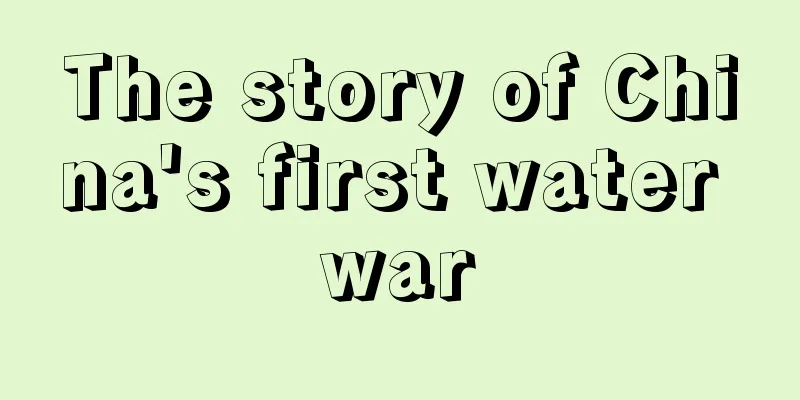Getting Marketing Done: User Interaction Bus

1. IntroductionWe have previously talked about the decoupling and connection between gameplays, which has basically solved 50% of the functional problems. We can basically build an activity completely, but there is still a gap from a good activity, mainly in terms of user experience and activity effect. This article will talk about how to handle the interaction problems of users participating in activities from the back-end perspective. When designing the system architecture or abstracting the functions, the system capabilities were split for reasons such as scalability. Each gameplay can exist independently and can be dynamically linked. The system architecture design is excellent, but the activities built in this way will damage the user experience if the interactive feedback is not handled as a whole. To a certain extent, users still feel that it is a puzzle-like activity. Each gameplay handles its own interaction, the linkage is not strongly perceived by users, and there may be conflicts in the interaction between gameplays. The integrity is not strong enough. The activities produced by our entire system should be complete rather than fragmented. The cost of each customization process is too high, and giving up on gameplay choreography would mean going back to square one. So in order to provide a better user interaction experience and reduce the cost of developing activity interaction logic, we need a centralized "bus" to be responsible for the overall user interaction. 2. Solution1. Problem AnalysisThe responsibility of the interaction bus is to "centrally process event feedback during user interaction and be responsible for the overall sense of interaction". Events are classified according to their source: There are two major categories: established activity interaction rules (game play itself, between gameplay) and operational operations.
In essence, these actions are all "feedback in interaction" between the activity and the users. We only need to grasp the essence of the touch, and then analyze the scene, form, and timing of the "feedback", and then summarize and abstract it. 2. Positioning determinationThe interaction bus is responsible for the feedback of an activity during the user interaction process, so it must be a "slice"-like existence. All interaction feedback occurs here. In other words, the gameplay and business event bus provide integrated function presentation, and the interaction bus provides unified user interaction feedback. These two parts provide users with a good user experience around the context of user participation. 3. AbstractFirst determine the context: We are dealing with interactive feedback issues during user participation in the activity field. The core object of processing is feedback . The main problems to be solved are inconsistent feedback during the interaction process, too much or too little feedback, inability to centrally manage, and relatively high maintenance costs. For operators, feedback is a kind of activity interaction rule that needs to be configured, managed, and triggered. For users, feedback can be actively pushed or pulled when entering an activity. These feedbacks have their own specific content, different forms of expression, and receiving users. There are priorities or mutually exclusive logics between feedbacks, etc. In general, feedback can be roughly abstracted as follows: Therefore, you only need to implement a service that can generate and maintain feedback and uniformly handle the relationship between feedbacks. 4. Run ViewLet's first take a look at the overall runtime view, and then explain in detail how to achieve unified processing of interactive feedback. First, the event source of the interactive bus can be an asynchronous event, such as task completion, successful assistance, etc., or a user click or interface opening, or a centralized contact recall from the operation, etc. After receiving the event, we need to create interactive feedback for the event itself and event-related interactive feedback, such as a toast prompt for task completion, and a refresh action or special effect for adding a chance to win a prize after the task is completed. After getting the corresponding feedback, it is poured into the existing buffer, or directly goes through the subsequent process, and then the event is standardized according to the rules. If there is a buffer, it is merged with other current events or discarded, and integrated with the current front-end interaction sequence to determine the final sequence of the current buffer waiting to be consumed. The final consumable sequence can be actively pushed to the user through the server long link, or brought to the user when the user interacts. 5. Consumption RulesMaintaining the consumption rules of the entire bus is the most complex part of the entire implementation. Usually, the consumption methods of the consumption queue can be divided into two types: pull and push. The usual logic of pull is to obtain the feedback behavior of the user's interaction between the last interaction and the current interaction, while push is usually a timed and quantitative consumption logic, and the consumption of feedback must support multi-dimensional processing, such as only consuming those related to a certain gameplay, and only consuming those related to this interaction. Therefore, feedback has a heavy business processing feature. The implementation of this part can be very complex or very simple, depending on the business scenario. Generally speaking, the activity dimension only needs to slightly package the rules, and it will not expand to be very complex. Let's take a relatively common example to give you a simple feel:
Many simple activities do not have strong feedback requirements. At this time, we only need a simple set of default timing rules or no special rules. The rule design practice in this part is strongly related to the business scenario. It is enough for us to ensure that the rules can be flexibly plugged in and out. If you want to communicate, we can talk in detail separately. 3. Final ThoughtsThis article will stop here for now. There are many technical details involved that are not discussed in detail, such as the definition of DSL, the way text is generated, whether the storage is redis or mysql, whether the SDK provides services, or an RPC is used to provide external services, or the buffer counting mechanism, push mechanism, performance and data consistency guarantee, etc., which can be determined according to the company's technology selection and business scenarios. If you have any related questions, you can chat with me. The ideas described in this article can actually be used not only in activity scenarios, but also in some notification systems or contact systems. |
<<: How to use your product’s “hot nickname” to save you 70% of advertising costs?
>>: Where to find growth in 2023? 丨Douyin VS Kuaishou e-commerce
Recommend
Can individuals register on Jumia? What do I need to prepare to open a store on Jumia?
Nowadays, e-commerce is developing very fast in ma...
Product strategies for “current needs” and “future needs”
This article focuses on "current demand"...
Brand Setting | How does the brand concept make users perceive it?
After the brand concept is formed, it is often nec...
The last mile of the car industry’s mind: Video account
The last mile of the car circle's mind in this...
A hit product in 1 day! DeepSeek+comfyUI+KeLing AI video creation process disassembled, hand-in-hand teaching you how to use AI to make short videos
In the era of short videos, how to quickly and eff...
Meta paid ad removal faces complaints, has privacy become a privilege for the rich?
Meta launched an ad-free subscription model for Fa...
The key to understanding the battle between JD.com and Meituan is human resources
The competition between JD.com and Meituan in the ...
Does Amazon ship by air or sea? How does Amazon ship by sea?
In the field of cross-border e-commerce, logistics...
Pay or earn money, how to tell the difference?
Are these paid knowledge products such as "Te...
What sites does eBay have? Which eBay site is good for business?
As a member of the cross-border e-commerce platfor...
Don’t fall into the “self-employment trap” unless you have these 6 abilities
In today's era full of opportunities and chall...
How to unblock an Amazon-affiliated store? How to successfully appeal?
On the Amazon platform, a merchant is not allowed ...
How is the cross-border e-commerce flower stand business? How to choose the category?
The cross-border e-commerce flower stand business ...
Pinduoduo Live, squeezes into the table
Recently, Pinduoduo has been making frequent moves...
What does Amazon Prime Day mean? What are the benefits of Prime membership?
Many cross-border e-commerce platforms now have me...









